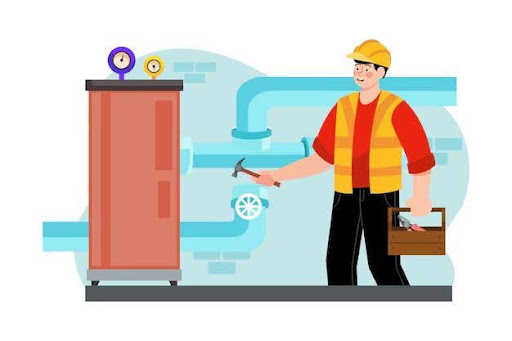A water heater is an essential household appliance that ensures a steady supply of hot water for your daily needs. Like any equipment, it can encounter issues over time. Recognizing the signs of trouble early can help you address problems before they escalate into costly repairs or replacements.
Below, we’ll discuss how to identify common water heater problems, including a water heater leaking from bottom, and provide tips for resolving these issues.
1. Unusual Noises from the Water Heater
A properly functioning water heater should operate quietly. If you notice strange sounds like popping, rumbling, or banging, it could be a sign of sediment buildup in the tank. Over time, minerals from hard water accumulate at the bottom of the tank, causing inefficiency and increasing the risk of damage.
What to Do
Regularly flushing your water heater can remove sediment buildup and extend the unit’s lifespan. If the problem persists, feel free to reach us.
2. Water Heater Leaking from the Bottom
One of the most concerning signs of a problem is when you notice your water heater leaking from the bottom. This could be due to several reasons, including:
- Drain Valve Leak: The drain valve is located near the bottom of the tank and is used for flushing. If it’s not fully closed or has deteriorated, it can cause water dripping from the bottom.
- Tank Corrosion: Over time, the tank can corrode, leading to a hot water heater leaking from the bottom.
What to Do
- Tighten the drain valve if it’s loose.
- If corrosion is the cause, you’ll need to replace the water heater, as the tank itself cannot be repaired.
3. Hot Water Heater Leaking from the Bottom Due to Pressure Issues
Excessive pressure inside the tank can also result in leaks. This is often caused by a malfunctioning temperature and pressure relief (T&P) valve or by setting the water temperature too high.
What to Do
- Check the T&P valve and ensure it’s functioning properly. If water is coming out of the valve, it may need replacement.
- Lower the thermostat setting to avoid overheating.
4. Water Heater Dripping from the Bottom
If you notice a water heater dripping from the bottom, it’s important to determine whether the issue is a minor fix or a sign of a more serious problem. Small drips may result from condensation, especially in humid environments, but they could also indicate a slow leak from the tank.
What to Do
Inspect the source of the drip carefully. If it’s not condensation, take water heater services to address the issue from the root.
5. Hot Water Tank Leaking from the Top
While leaks from the bottom are more common, you may also find water coming out of the top of the water heater. This is often due to loose or damaged connections where the water supply lines enter the tank.
What to Do
- Check the inlet and outlet connections for any loose fittings.
- Tighten or replace any damaged components as needed.
6. The Gas Water Heater Leaking Water from the Bottom
Gas water heaters can develop leaks for the same reasons as electric models. However, additional safety concerns come into play when dealing with a gas unit. A gas water heater leaking water from the bottom requires immediate attention to prevent potential gas leaks or damage to other components.
What to Do
- Turn off the gas supply immediately if you notice a leak.
- Search for “water heater repair near me” in your area such as Farmingdale.
7. Rust-Colored or Cloudy Water
If your hot water appears rusty or cloudy, it’s a clear sign that there’s an issue with your water heater. Rust-colored water often indicates corrosion inside the tank or the presence of rusted pipes.
What to Do
- Flush the tank to remove any sediment or rust particles.
- If the problem persists, the anode rod (a component designed to prevent tank corrosion) may need replacement.
8. Fluctuating Water Temperature
Inconsistent water temperature is another sign of a water heater problem. This could be due to a faulty thermostat or heating element.
What to Do
- Test the thermostat settings and adjust as necessary.
- If the heating element is damaged, it will need to be replaced.
9. How to Fix a Leaking Water Heater Tank
If your water heater tank itself is leaking, it’s often a result of corrosion or a manufacturing defect. Unfortunately, a leaking tank cannot be repaired and must be replaced.
Steps to Take
- Turn off the power supply (electric or gas) and water supply.
- Drain the tank completely to prevent further leakage.
- Consult local plumbers in Bensonhurst or any other area to install a new water heater based on your location.
By identifying and addressing water heater problems early, you can save time, and money, and avoid unexpected disruptions. Whether you’re dealing with a hot water tank leaking or water coming out of the top of your water heater, proactive maintenance is key to keeping your unit running smoothly. If you’re unsure how to fix a leaking water heater tank or other issues, don’t hesitate to reach Primeline plumbing.


